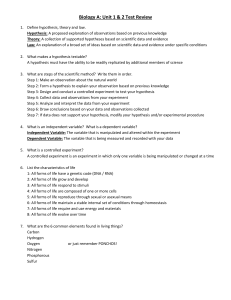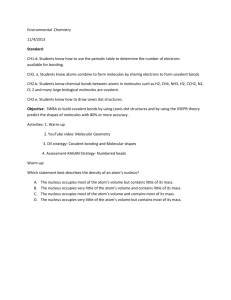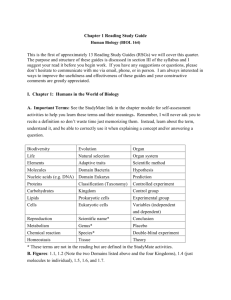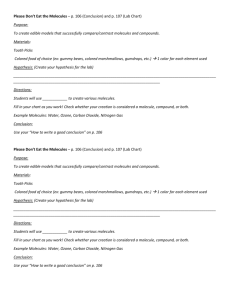File
advertisement
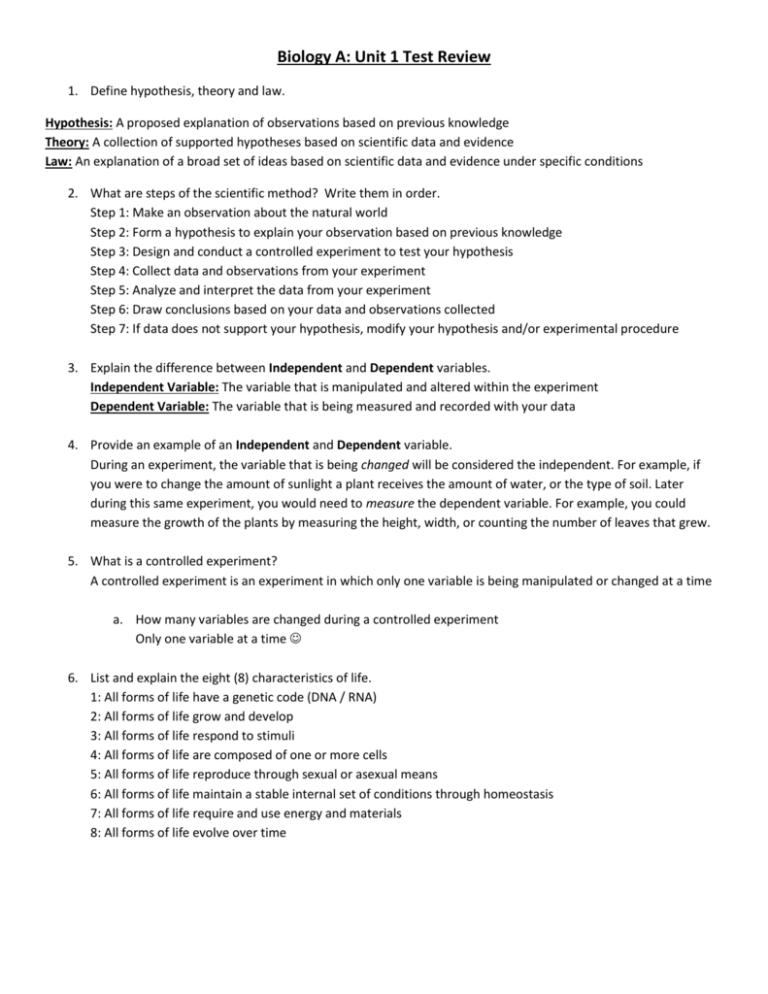
Biology A: Unit 1 Test Review 1. Define hypothesis, theory and law. Hypothesis: A proposed explanation of observations based on previous knowledge Theory: A collection of supported hypotheses based on scientific data and evidence Law: An explanation of a broad set of ideas based on scientific data and evidence under specific conditions 2. What are steps of the scientific method? Write them in order. Step 1: Make an observation about the natural world Step 2: Form a hypothesis to explain your observation based on previous knowledge Step 3: Design and conduct a controlled experiment to test your hypothesis Step 4: Collect data and observations from your experiment Step 5: Analyze and interpret the data from your experiment Step 6: Draw conclusions based on your data and observations collected Step 7: If data does not support your hypothesis, modify your hypothesis and/or experimental procedure 3. Explain the difference between Independent and Dependent variables. Independent Variable: The variable that is manipulated and altered within the experiment Dependent Variable: The variable that is being measured and recorded with your data 4. Provide an example of an Independent and Dependent variable. During an experiment, the variable that is being changed will be considered the independent. For example, if you were to change the amount of sunlight a plant receives the amount of water, or the type of soil. Later during this same experiment, you would need to measure the dependent variable. For example, you could measure the growth of the plants by measuring the height, width, or counting the number of leaves that grew. 5. What is a controlled experiment? A controlled experiment is an experiment in which only one variable is being manipulated or changed at a time a. How many variables are changed during a controlled experiment Only one variable at a time 6. List and explain the eight (8) characteristics of life. 1: All forms of life have a genetic code (DNA / RNA) 2: All forms of life grow and develop 3: All forms of life respond to stimuli 4: All forms of life are composed of one or more cells 5: All forms of life reproduce through sexual or asexual means 6: All forms of life maintain a stable internal set of conditions through homeostasis 7: All forms of life require and use energy and materials 8: All forms of life evolve over time 7. What are the 6 common elements found in living things? *hint* what’s the acronym? Carbon Hydrogen Oxygen or just remember PONCHOS! Nitrogen Phosphorous Sulfur 8. Fill in the following chart. What are the 3 subatomic particles? What is the charge of each? Where are they located? Sub-atomic particle Protons Neutrons Electrons Charge Location Nucleus of atom Nucleus of atom Electron cloud outside nucleus of atom Positive Neutral Negative 9. Define the following terms: a. Element – A pure subsance that is composed of only one element from the periodic table b. Compound – A combination of two or more elements from the periodic table c. Ionic Bond – Electron interaction between two atoms in which electrons are “taken” or “given” away d. Covalent Bond – Electron interaction between two atoms in which elecrons are “shared” 10. Identify if the following are Elements or Compounds: a. Au E e. Pb E b. CH4 C f. H2O C c. KNO3 C g. CuSO4 C d. Hg E h. CO2 C i. j. k. l. H2 CaCO3 O2 C6H12O6 E C E C 11. Explain and give an example for the following properties of water in your own words: a. Cohesion – The tendency of molecules to “stick” to similar molecules; water sticking to water b. Adhesion – The tendency of molecules to “stick” to different molecules; water sticking to a glass c. Surface tension – The force created by water molecules between the surface of water and the air above 12. Fill in the blank with the term that describes the following pH ranges (Acid/Base/Neutral) a. pH 8.5 Base d. pH 4.2 Acid g. pH 3.8 Acid b. pH 2.1 Acid e. pH 10.6 Base h. pH 11.4 Base c. pH 12.7 Base f. pH 7.0 Neutral i. pH 6.3 Acid 13. List some examples of household items that are considered acidic or basic Acids – Lemon juice, soda/pop, vinegar Base – Ammonia cleaner, baking soda, soap 14. Why is carbon important to living things? a. Characteristic 1 Carbon has four bonds b. Characteristic 2 Carbon can form ring (circular) structures c. Characteristic 3 Carbon can form long chains (Carbon-to-carbon-to-carbon-to-carbon…) 15. Fill out the macromolecule graphic organizer on the next page. Macromolecules Common Name(s) Function(s) Sources Carbohydrate Sugar, starch, fiber Short term energy Sweets, breads, pasta Fat & Oil Long term energy storage, cell membrane structure Butter, animal fat, oils Protein Protein Cell membrane structure, cell support, chemical reactions Meats, beans (legumes), nuts Nucleic Acid DNA, RNA Stores genetic information Inside cell (nucleus) Lipid

